Wow, we recently spent two weeks visiting Yosemite National Park, and we agree all of the superlatives said about it are true. It is an incredibly beautiful place and we understand why more than 4 million people visit each year. Coming down from the north, coast, and high country, and heading toward the desert on our planned route, this was the first place this season we considered to be “hot hot”. We saw 112 F on the truck’s thermometer on the way to the park one day. We made good use of our Camelbacks (backpacks full of ice water, with a drinking hose).
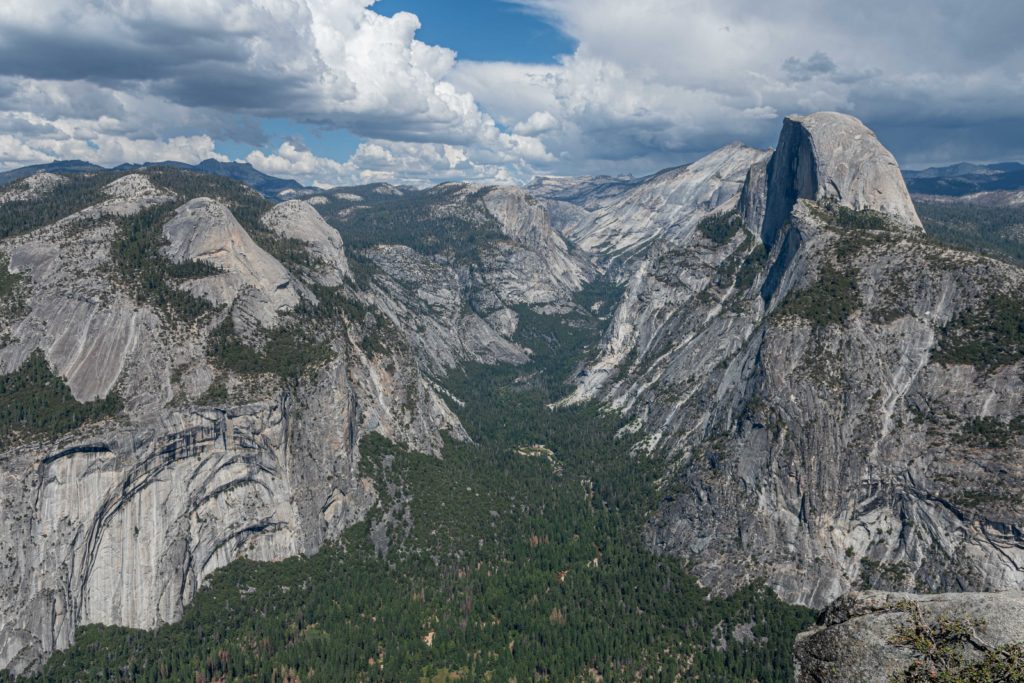
The formation of Yosemite Valley began about 50 million years ago. What we see today is the result of periods of erosion, tectonic upheaval, and glaciation. In several of the glacial periods, the entire valley was filled by the glacier with only Half Dome above the ice. The valley is actually about 5000 feet deep, with 2000 feet of glacial till and sediment being what we stand on today, resulting in the 3000 foot deep valley.
There are four geographic areas of the park to visit. The granite cliffs of Yosemite Valley and Hetch Hetchy, the floor of Yosemite Valley, the High Sierra, and the Sequoia Groves.
The granite cliffs of Yosemite Valley and Hetch Hetchy are stunning, and they offer some of the best rock climbing in the world. You don’t have to be a climber to see them up close, though. There are several hikes up or down the valley walls; if you are up to the challenge, go for it.
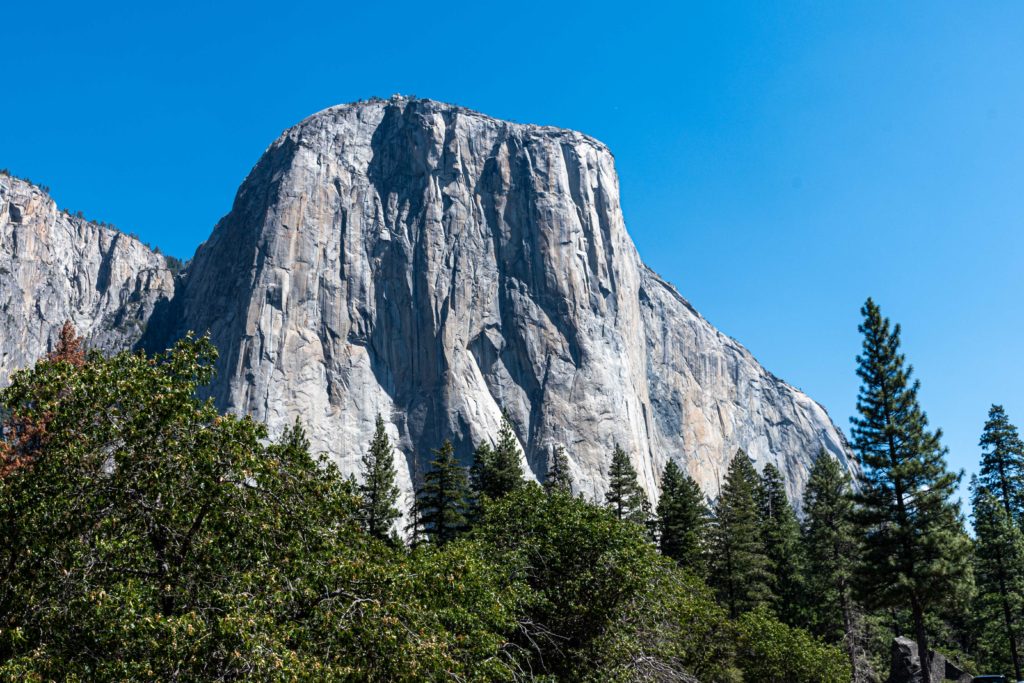
El Capitan is the world’s largest granite monolith. It dominates the view as you enter Yosemite Valley from the west. Since it is 3000 feet high, the climbers on its face look so tiny they are barely visible with the naked eye. El Capitan is a favorite of rock climbers and was featured in the recent movie Free Solo.
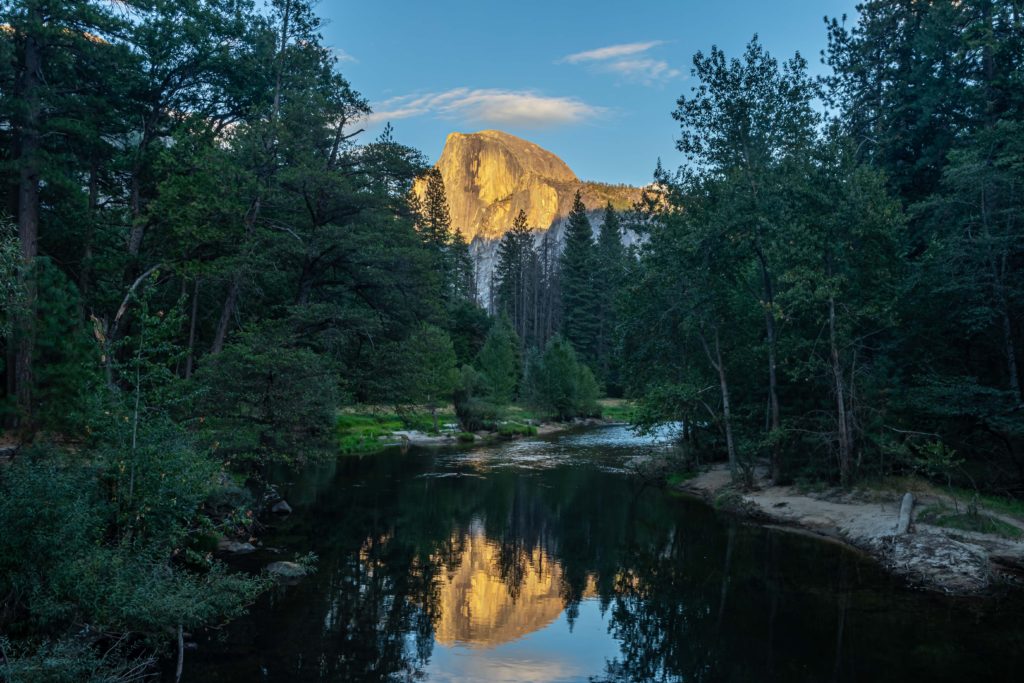
Since he started planning this year’s journey Joe has wondered where the other half of Half Dome is, expecting it to be a pile of granite rubble in the valley below Half Dome. It turns out there is no other half – this is all there ever was. There are many places in the valley from which to view Half Dome. Our favorite was Sentinel Bridge, where you can also see a reflection of it in the Merced River. At sunset the peak appears to be made of gold. The other great place to view it from is Glacier Point – at 7200 feet in elevation you are looking across to it rather than up at it.
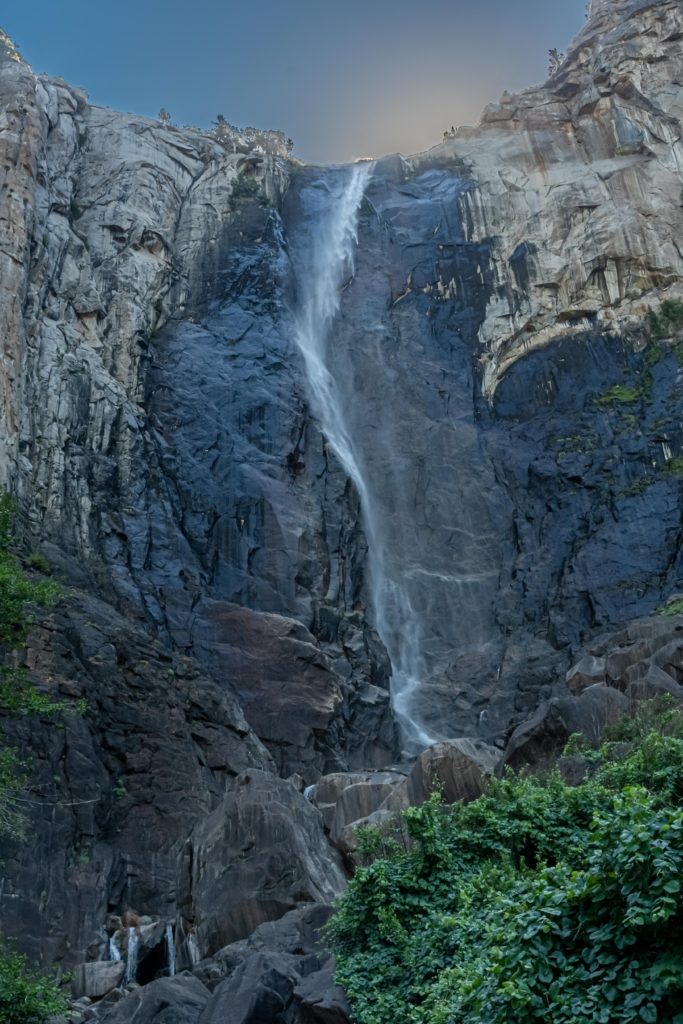
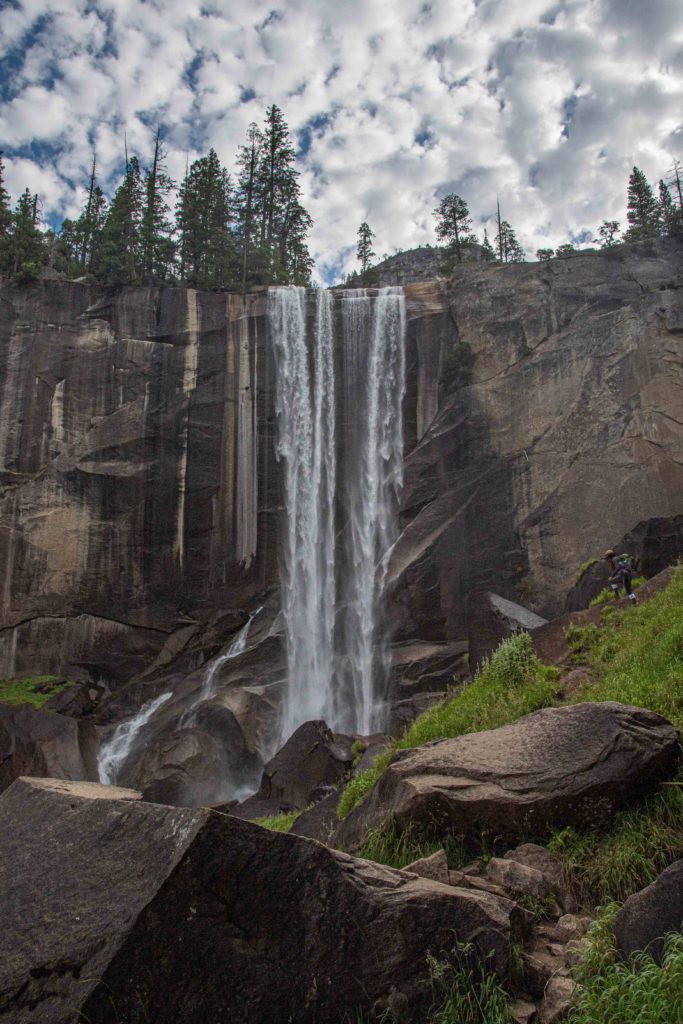
Also part of the granite cliff geography are the waterfalls. The waterfalls in Yosemite are fed from snow melt and are at their peak flow in late May to early June. We were not able to get there until late August, resulting in some of the waterfalls being completely dry and all of them being at low flows for the year. Even at low flow they are still beautiful.
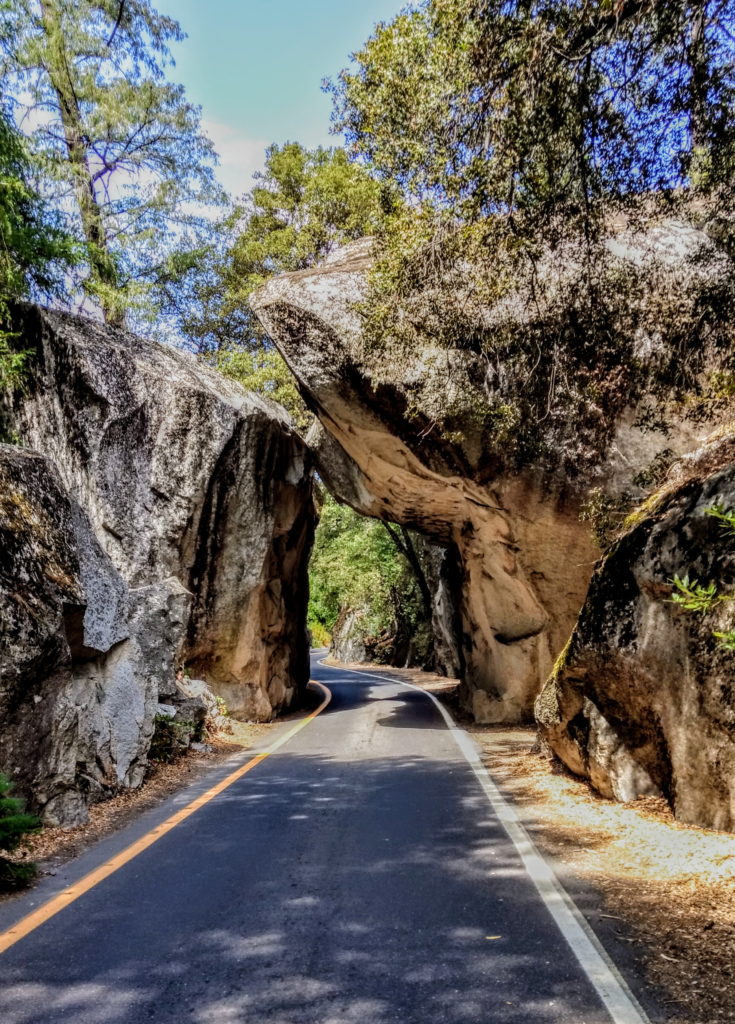
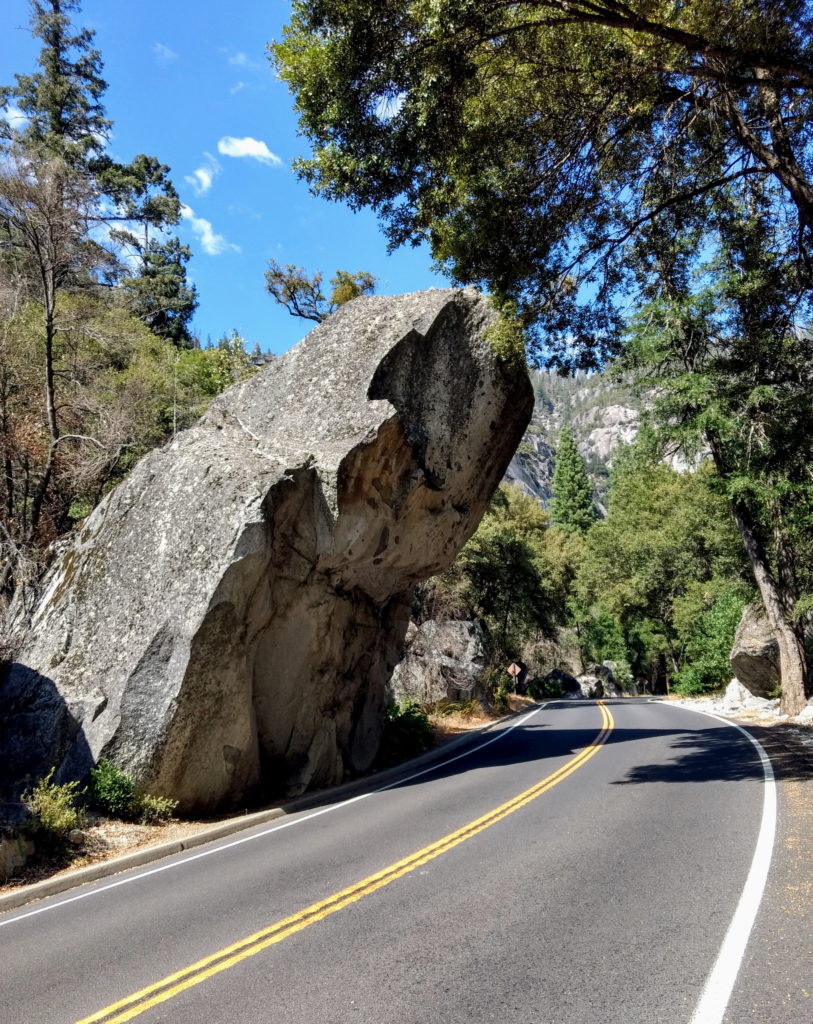
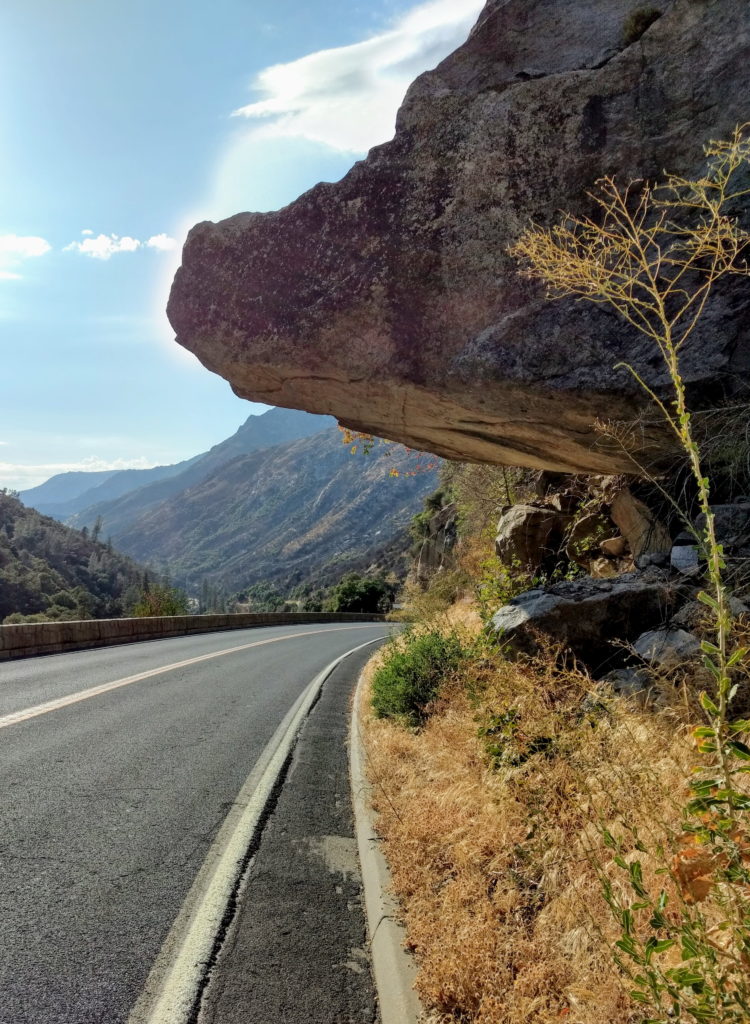
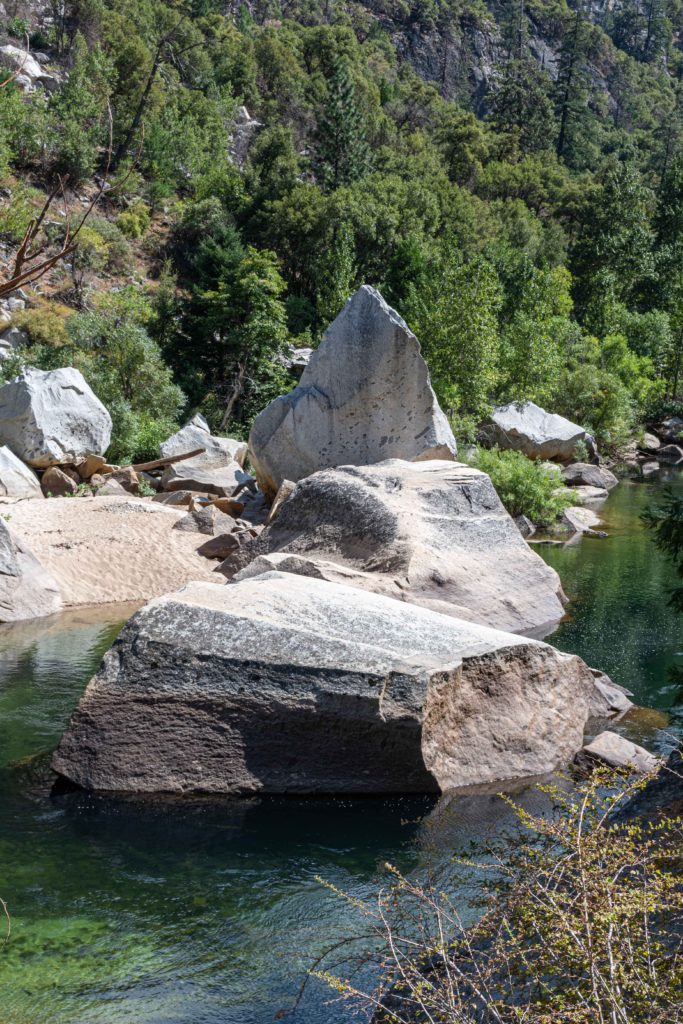
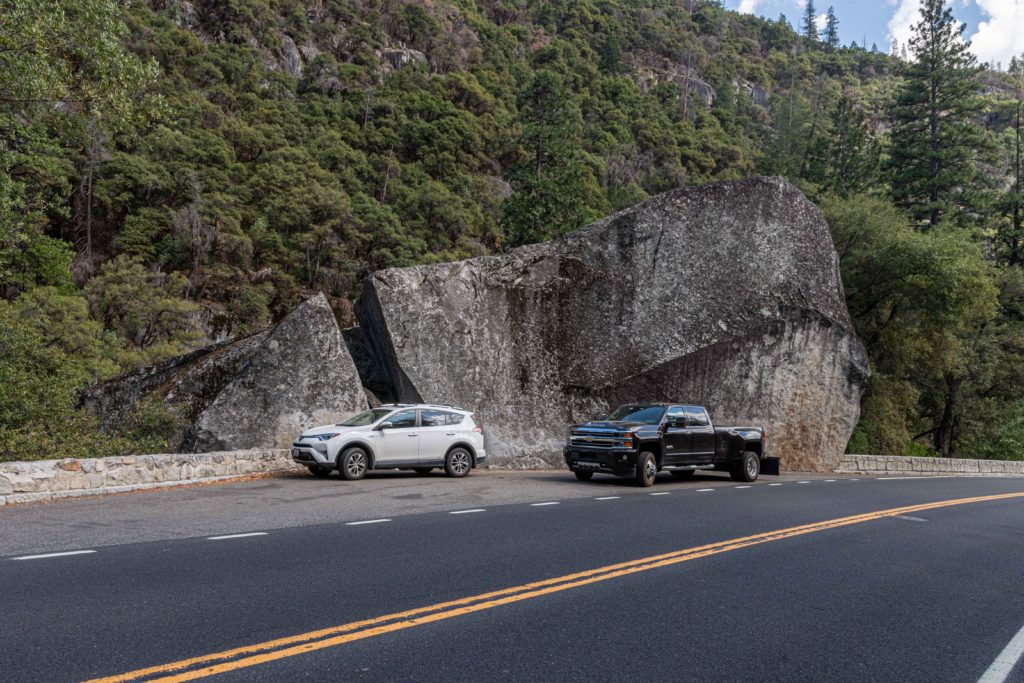
Massive boulders are littered throughout the park, especially near the Merced River. They have fallen off the cliff faces over time. This process continues today and you can see dents in the road where heavier rocks have fallen. It is common to see road signs that say Active Rock Slide Area Next 2 Miles Do Not Stop. Presumably it’s better to be a moving target than a stationary one. On Highway 140 about 2 miles from our campground the highway had to be rerouted in 2006 due to a massive rock slide. The slide is still active and still too dangerous to clear today, resulting in one-way traffic across two ‘temporary’ bridges (across the river, past the slide, then back over) with a 45-foot vehicle length limit. BTW – we crossed these bridges with our 58-foot truck and camper combination and had no problems (besides Joe’s white knuckles).
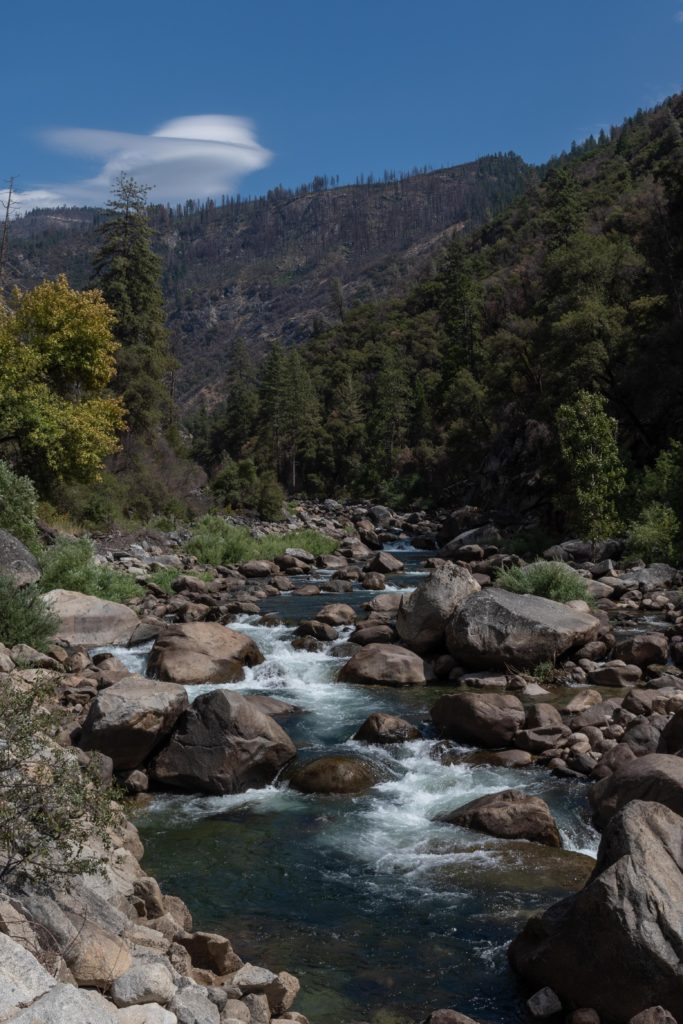
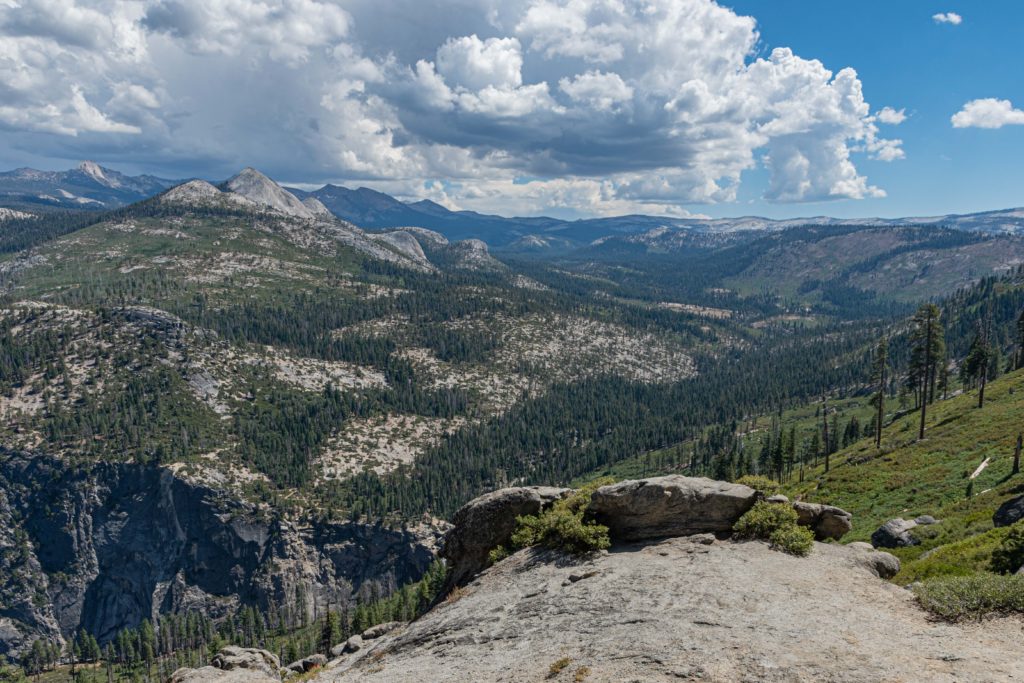
The High Sierra has smooth granite domes, craggy peaks up to 13,000 feet, beautiful mountain meadows, and alpine lakes. We drove through this area of the park on our way to the campground where we stayed, but were unable to stop and explore. It was a two-hour drive back to the High Sierra, so we will have to return another time and stay on the east side of the park.
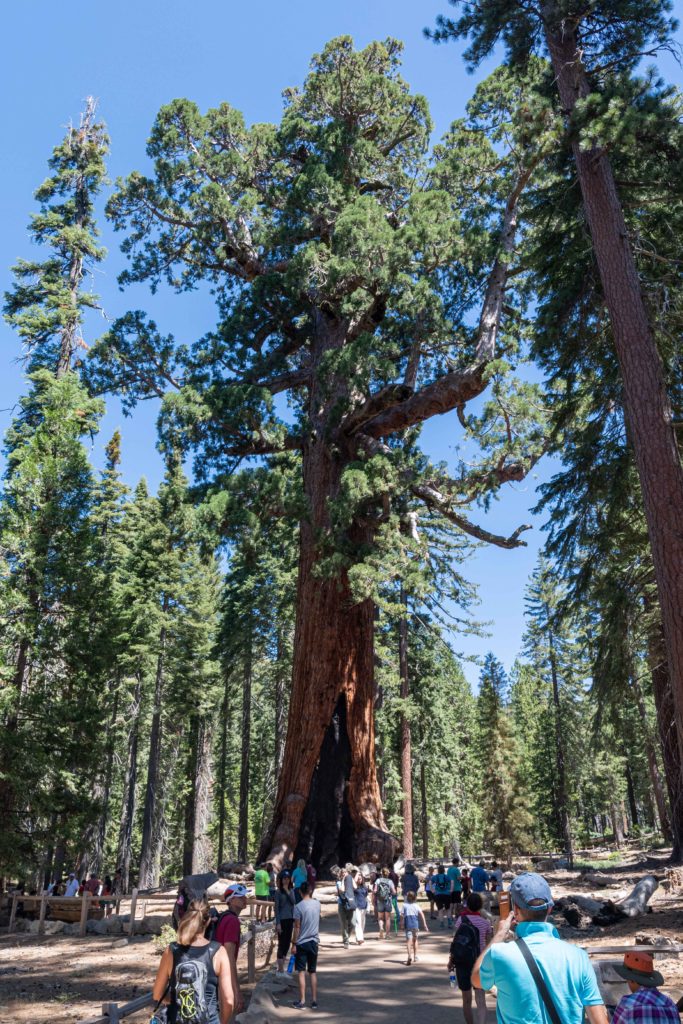
The last geographic region of the park is the Sequoia Groves. There are at least three groves of these giants in the park. We visited the Mariposa Grove, the largest and most visited. This grove and Yosemite Valley were originally protected by Abraham Lincoln in 1864. More on Sequoia Trees in our next post from Sequoia National Park.
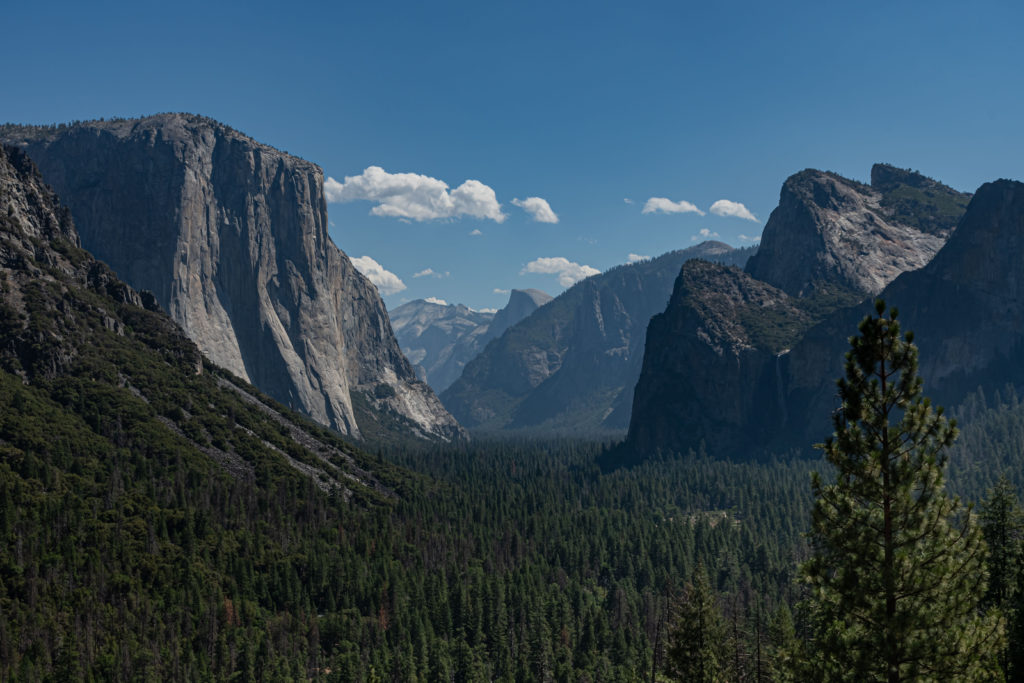
(Half Dome is in the center of the picture.)
Yosemite is an incredibly beautiful park and we encourage everyone to visit it someday. A return trip is needed to see the waterfalls in May / June, explore the High Sierra, and do some longer hikes. Both of us currently have knee injuries and could not hike very far this time. Doctor visits are scheduled and we hope to be healed in the not too distant future. The valley is crowded and parking between 11 am and 4 pm is a problem, but it can be managed by arriving outside that window. Yosemite is a large park, about 760,000 acres, and outside of the valley we found the roads to be narrow and very curvy. (Bring your anti-nausea medication!) Our campsite was only a 10-minute drive from the Highway 140 Park entrance (which is closest to Yosemite Valley) and it still took 45 minutes to get into the park, get to parking near the shuttle buses, and find a parking place. Other areas of the park were between one and two hours drive each way. So when you visit plan lots of time to get to what you want to see.
You’ve outdone yourselves once again.